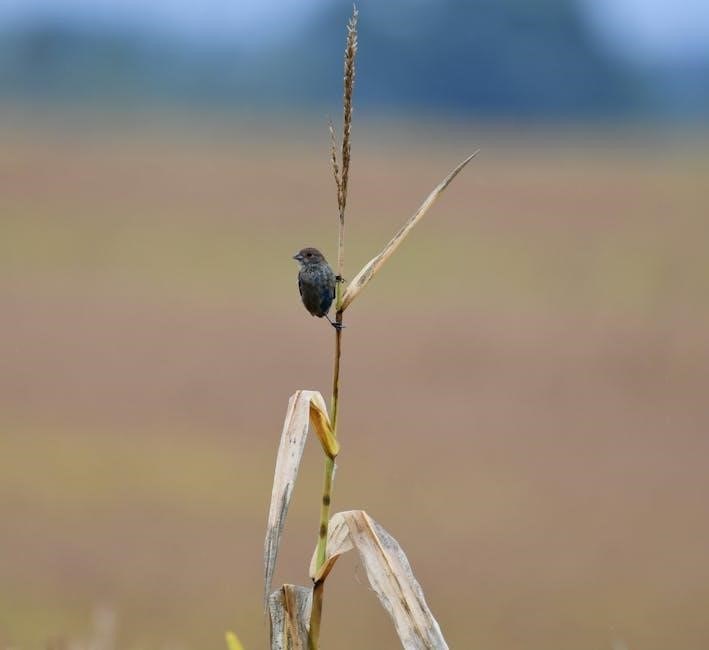Alabama’s diverse landscapes host over 400 bird species, from waterfowl to songbirds, making it a vibrant destination for birdwatchers. A field guide simplifies identification and exploration of this avian richness.
Geographical Significance of Alabama for Birdlife
Alabama’s strategic location along the Atlantic Flyway makes it a critical stopover for migratory birds. Its diverse habitats, including forests, wetlands, and Gulf Coast beaches, support a wide variety of species. The state’s central position in the Southeast attracts both resident and migratory birds, creating a rich avian biodiversity that is unparalleled in the region. This geographical diversity makes Alabama a paradise for birdwatchers and a vital area for bird conservation efforts.
Diversity of Bird Species in Alabama
Alabama is home to over 400 bird species, ranging from common backyard birds like the American Crow and Blue Jay to birds of prey such as Bald Eagles. The state’s diverse habitats support a wide variety of songbirds, waterfowl, and migratory species. Field guides often organize these species by color or family, making identification easier for enthusiasts. This rich avian diversity highlights Alabama’s importance as a haven for both resident and migratory bird populations.
Purpose of a Field Guide for Alabama Birds
A field guide for Alabama birds serves as an essential tool for identifying and understanding the state’s avian diversity. It provides detailed descriptions, vibrant photographs, and range maps to help birders recognize species. Organized by color or family, these guides simplify identification, making birdwatching more accessible and enjoyable. They also educate readers about bird behavior, habitats, and conservation efforts, fostering a deeper appreciation for Alabama’s rich birdlife and its ecological significance.
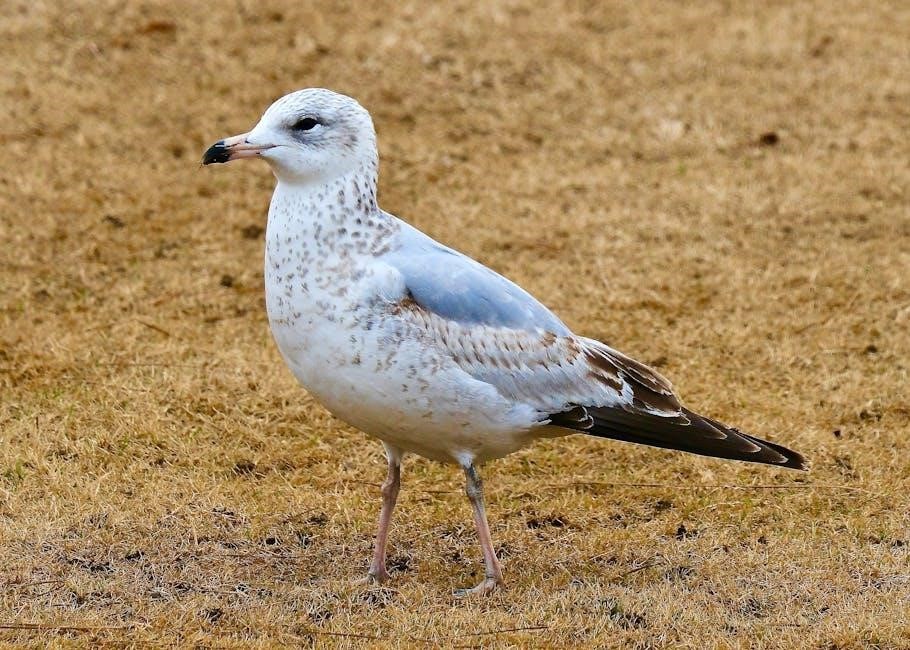
State Bird of Alabama
The Yellowhammer, or Northern Flicker, is Alabama’s official state bird. Known for its distinctive drumming on trees, the male features a striking red crescent on its head.
Yellowhammer (Northern Flicker)
The Yellowhammer, scientifically known as Colaptes auratus, is a medium-sized woodpecker with distinctive yellow or red undersides. Males have a red crescent on the back of their heads, while females lack this feature. Known for their drumming on trees, they inhabit woodlands and urban areas, feeding on insects and sap. Their adaptability makes them common in Alabama, where they are celebrated as a cultural symbol and the state bird.
Habitat and Behavior of the Yellowhammer
The Yellowhammer thrives in Alabama’s open woodlands, forest edges, and urban areas. These birds are adaptable, often nesting in tree cavities they excavate. Their diet consists mainly of insects and sap. Known for drumming on trees to communicate, Yellowhammers are social yet territorial; They forage on the ground and in trees, showcasing their versatility. Their behavior reflects a balance between resourcefulness and dependence on woodland ecosystems.
Why the Yellowhammer is the State Bird
The Yellowhammer, or Northern Flicker, became Alabama’s state bird due to its cultural and historical significance. Its nickname stems from Alabama soldiers being called “Yellowhammers” during the Civil War. The bird’s widespread presence and distinctive call make it a beloved symbol. Its adaptability to various habitats aligns with Alabama’s diverse landscapes, making it a fitting representation of the state’s natural heritage and enduring spirit.
Common Backyard Birds of Alabama
Alabama’s backyards host a variety of birds like the Northern Cardinal, Blue Jay, and American Robin. Their abundance is due to the state’s favorable climate and diverse habitats, which provide ample food sources and nesting opportunities.
Year-Round Residents
Alabama’s backyard birdlife features year-round residents like the Northern Cardinal, Blue Jay, and American Robin. These birds thrive in the state’s mild climate and diverse habitats, adapting seamlessly to urban and rural environments. Their presence is a delight for birders, as they remain visible throughout the year, offering consistent opportunities for observation and study. Their adaptability to backyard feeders and landscapes makes them a staple in Alabama’s avian community.
Seasonal Visitors
Alabama’s birdlife is enriched by seasonal visitors, including warblers, tanagers, and hummingbirds. These birds arrive during spring and fall migrations, bringing vibrant colors and unique songs. Species like the Ruby-throated Hummingbird and Yellow Warbler are common summer residents, while others, such as the American Goldfinch, visit during winter. These seasonal visitors contribute to the state’s diverse avifauna, offering exciting opportunities for birders to spot species not seen year-round.
How to Attract Backyard Birds
To attract backyard birds, provide a variety of food sources like seed feeders, nectar for hummingbirds, and suet for woodpeckers. Install bird baths or ponds for water, and plant native vegetation offering berries, seeds, and insects. Maintain a chemical-free yard to ensure bird safety and consider adding nesting boxes for species like bluebirds or wrens. These efforts create a welcoming habitat for Alabama’s diverse birdlife.
Birds of Prey in Alabama
Alabama hosts a diverse range of raptors, including hawks, eagles, owls, and falcons, adapted to various habitats from forests to coastal regions, showcasing their hunting prowess.
Hawks and Eagles
Alabama is home to several species of hawks and eagles, including the Red-tailed Hawk, Cooper’s Hawk, and Bald Eagle. These birds of prey thrive in diverse habitats, from forests to wetlands. Known for their sharp talons and powerful wings, they primarily hunt small mammals, birds, and fish. Bald Eagles, once endangered, have rebounded in Alabama, nesting near large water bodies. Hawks are agile flyers, often seen soaring overhead or perched in trees, making them a favorite among birders. Their presence highlights Alabama’s rich ecological diversity and the importance of conservation efforts to protect these magnificent raptors and their habitats.
Owls
Alabama is home to a variety of owl species, including the Barn Owl, Great Horned Owl, and Eastern Screech-Owl. These nocturnal birds are known for their silent flight and acute hearing, making them skilled hunters of small mammals, birds, and insects. Owls can be found in diverse habitats, from dense forests to open fields. Their distinctive calls and camouflaged plumage make them challenging yet rewarding to spot for birders. Conservation efforts focus on preserving their habitats to ensure these mysterious birds continue to thrive in the state.
Falcons
Falcons are sleek, swift predators in Alabama’s skies, with the American Kestrel being the most common species. Known for their agility, they hunt small prey like insects, birds, and rodents. Falcons nest in tree cavities or existing nests, often near open areas for hunting. While not currently endangered, habitat preservation is crucial for their survival. Their swift dives, or stoops, make them thrilling to observe for bird enthusiasts across the state.
Waterfowl and Wading Birds
Alabama’s wetlands host diverse waterfowl and wading birds, including ducks, geese, herons, and egrets. These birds thrive in aquatic habitats, feeding on fish, plants, and small organisms, playing vital roles in the ecosystem balance and offering stunning sightings for birders statewide.
Ducks and Geese
Alabama is a key habitat for various duck and goose species, including Mallards, Wood Ducks, and Canada Geese. These waterfowl are common in wetlands, ponds, and even urban areas. Many species migrate through the state during winter, while others remain year-round. Ducks and geese are omnivores, feeding on aquatic plants, insects, and grains. Their vibrant plumage and distinctive calls make them popular among birders. They play a vital role in seed dispersal and ecosystem balance.
Herons and Egrets
Herons and egrets are iconic wading birds in Alabama, often seen in wetlands, coastal areas, and lakes. The Great Blue Heron and Great Egret are common species, known for their slender builds and graceful movements. These birds hunt small fish, frogs, and insects by wading in shallow water. Their white or gray plumage blends well with their surroundings. Herons typically have more colorful accents, while egrets are usually pure white, making them a striking sight for birders.
Shorebirds
Alabama’s shorebirds, such as sandpipers, plovers, and oystercatchers, are frequent visitors to coastal beaches and mudflats. These birds are known for their agile movements and unique feeding behaviors, often probing sand or mud for small invertebrates. Many species migrate through the state, particularly during spring and fall, making Alabama a key stopover for these travelers. Birders can spot them in tidal zones, where their vibrant plumage and distinctive calls make them a delight to observe.
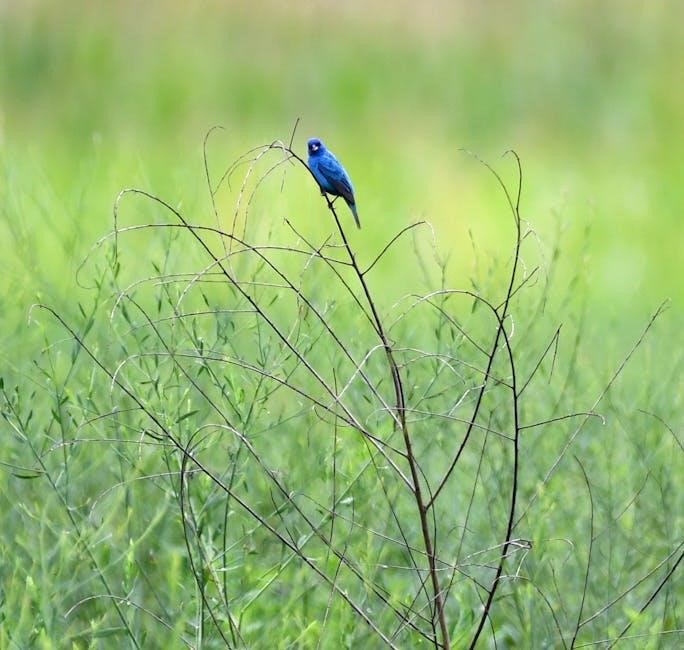
Songbirds of Alabama
Alabama is home to diverse songbirds, including native species and migratory visitors. They play a vital role in ecosystems, adding beauty with their melodies and colors.
Warblers
Warblers are small, colorful songbirds that frequent Alabama during migration. With their vibrant plumage and melodious songs, they are a favorite among birders; Species like the Yellow Warbler and Black-and-white Warbler are common. They inhabit woodlands, gardens, and shrubby areas, feeding on insects. Their active, flitting behavior makes them a delight to observe. Identifying warblers can be challenging due to similar markings, but their distinctive songs and habitat preferences offer clues for enthusiasts.
Sparrows
Sparrows are abundant in Alabama, with species like the House Sparrow and Song Sparrow commonly seen. These small, adaptable birds thrive in diverse habitats, including backyards, fields, and urban areas. Sparrows forage on the ground for seeds and insects, often in flocks. Their social nature and distinctive songs make them easy to recognize. They are also known for their simple nests, typically built in shrubs or trees, and are frequent visitors to bird feeders year-round.
Tanagers
Tanagers are vibrant songbirds that add color to Alabama’s woodlands and backyards. The Scarlet Tanager and Summer Tanager are common species, with males displaying striking red and yellow plumage. These birds primarily feed on fruits, insects, and nectar, often visiting backyard feeders. They breed in Alabama’s deciduous forests and are known for their melodious songs. Attracting tanagers can be achieved by planting native fruit-bearing plants and maintaining a welcoming habitat.
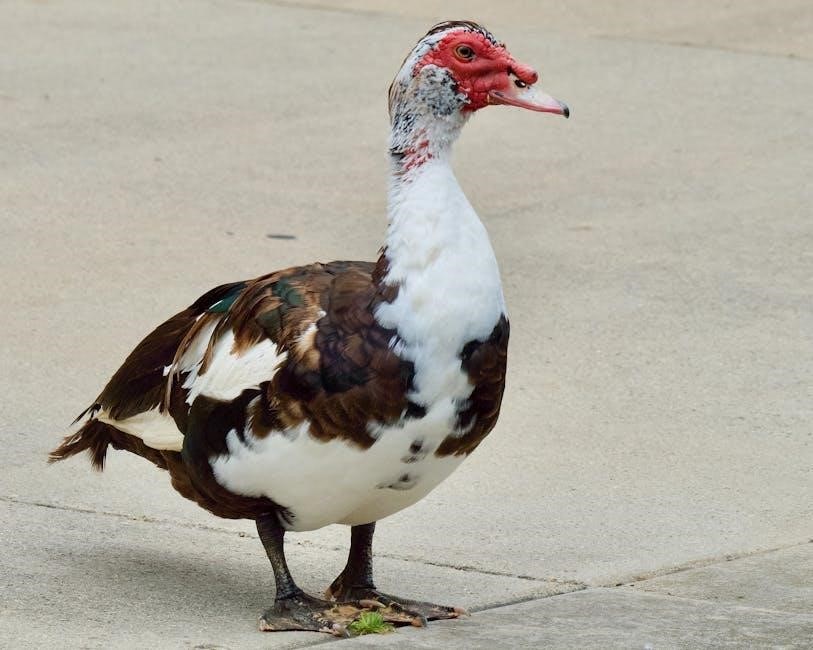
Bird Migration Patterns
Alabama serves as a critical stopover for migratory birds, offering essential habitats along coastlines and wetlands. Its location along major flyways makes it a vital rest and refueling point for numerous species.
Alabama’s Role in the Atlantic Flyway
Alabama plays a vital role in the Atlantic Flyway, a major migration route for birds traveling between breeding and wintering grounds. The state’s diverse habitats, including wetlands, forests, and coastlines, provide crucial stopover sites for millions of migratory birds. Species such as songbirds, waterfowl, and raptors rely on Alabama’s resources for rest and refueling. Its strategic location ensures it is a key link in the survival of many migratory species.
Spring Migration
During spring migration, Alabama welcomes a vibrant influx of birds returning from wintering grounds. Species like warblers, tanagers, and orioles arrive, often stopping in woodlands and gardens to refuel. This period, typically from late winter to early spring, is ideal for spotting colorful songbirds. Migrants take advantage of Alabama’s abundant food sources and habitats, making it a prime location for birdwatchers to observe these species in their breeding plumage.
Fall Migration
Fall migration brings a steady stream of birds passing through Alabama, heading south for warmer climates. Species like warblers, sparrows, and waterfowl are abundant during this period. Raptors, such as hawks and eagles, ride thermals overhead, while shorebirds flock to coastal areas. This migration peaks from late summer to early winter, offering prime opportunities to observe a wide variety of birds in transitional habitats, preparing for their wintering grounds.
Rare and Endangered Birds
Alabama is home to several rare and endangered bird species, including the Whooping Crane and Wood Stork, due to its diverse habitats and migratory routes.
Species of Special Concern
Alabama’s avifauna includes species of special concern, such as the Wood Stork and Whooping Crane, both critically endangered. The Black-crowned Night-Heron is also monitored due to declining populations. These birds rely on wetland habitats, which are increasingly threatened by development and climate change. Conservation efforts focus on protecting critical breeding and feeding grounds to ensure their survival.
Habitat Loss and Conservation Efforts
Habitat loss due to urbanization, agriculture, and industrialization threatens Alabama’s bird populations. Wetlands, forests, and grasslands are critical ecosystems being degraded or fragmented. Conservation efforts include habitat restoration projects, protected wildlife reserves, and community engagement. Organizations like the Alabama Wildlife Federation and Audubon Society work to replant native vegetation and restore wetlands, ensuring vital habitats for endangered and migratory birds, fostering biodiversity and ecological balance.
How to Identify Rare Birds
Identifying rare birds requires keen observation of field marks, plumage, size, and behavior. Listen for distinctive calls and songs, as these can be crucial for identification. Use binoculars for close-up views and consult detailed field guides or birding apps for comparisons. Note habitat preferences and seasonal occurrences, as rare birds often appear in specific environments during migration; Practice patience and stay quiet to avoid startling birds, ensuring accurate observations and minimizing disturbances;
- Study plumage patterns and beak shapes.
- Record bird calls for later identification.
- Join guided birding tours for expert insights.
Rare bird sightings are thrilling, so enjoy the experience while aiding conservation efforts!
Birding Hotspots in Alabama
Alabama’s strategic location along major migration routes, combined with its diverse habitats, makes it a prime destination for spotting a wide variety of bird species.
Gulf Coast Beaches
The Gulf Coast Beaches of Alabama are renowned for their rich avifauna, attracting migratory shorebirds, seabirds, and waterfowl. Species like sandpipers, plovers, and terns frequent these shores, while ospreys and herons thrive in coastal wetlands. The beaches provide critical stopover points during spring and fall migrations, making them a must-visit for birders. The mix of sandy dunes, marshes, and open waters creates a habitat diversity that supports a wide range of birdlife year-round.
Mobile Bay
Mobile Bay is a vital stopover for migratory birds, particularly during spring and fall migrations. It hosts a variety of waterfowl, shorebirds, and songbirds. The bay’s wetlands and marshes provide ideal habitats for herons, egrets, and other wading birds. As part of the Atlantic Flyway, Mobile Bay is crucial for bird conservation, offering nesting and feeding grounds for numerous species.
Little River Canyon
Little River Canyon, located in northeastern Alabama, is a prime birding destination. Its diverse habitats, including hardwood forests and rocky cliffs, attract a wide range of species. Birds like peregrine falcons, ospreys, and various hawks can be spotted. The canyon’s unique terrain also supports woodland birds such as woodpeckers and thrushes. During migration, warblers and other songbirds frequent the area, making it a must-visit for bird enthusiasts in Alabama.
Black Belt Region
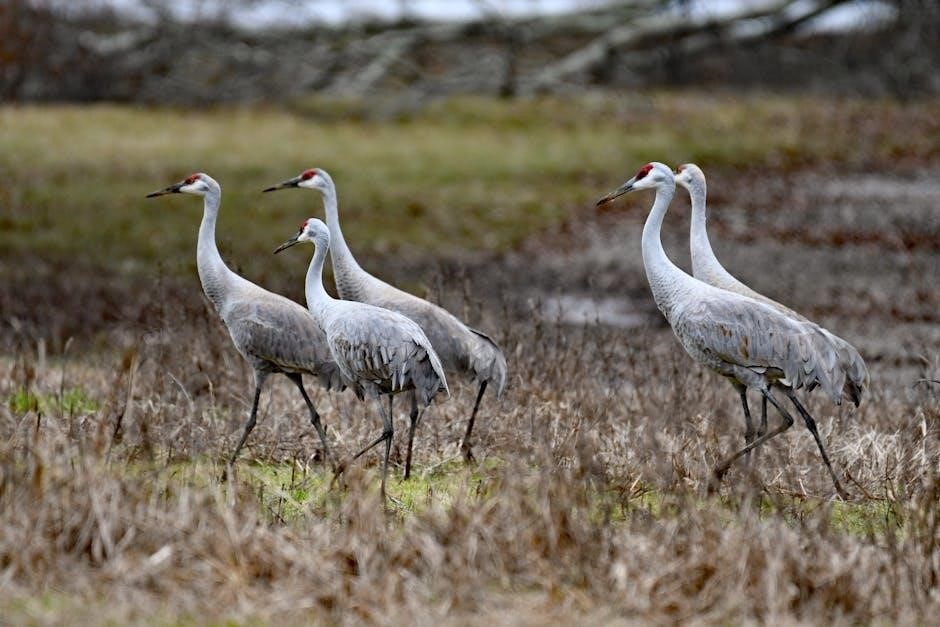
The Black Belt Region, known for its rich soil and diverse ecosystems, is a critical birding area in Alabama. Open fields, woodlands, and wetlands provide habitat for species like the Northern Bobwhite and Wild Turkey. This region is also vital for migratory birds, offering stopover points for waterfowl and songbirds. Its unique landscape supports a variety of avian life, making it a key destination for birders exploring Alabama’s diverse bird populations.
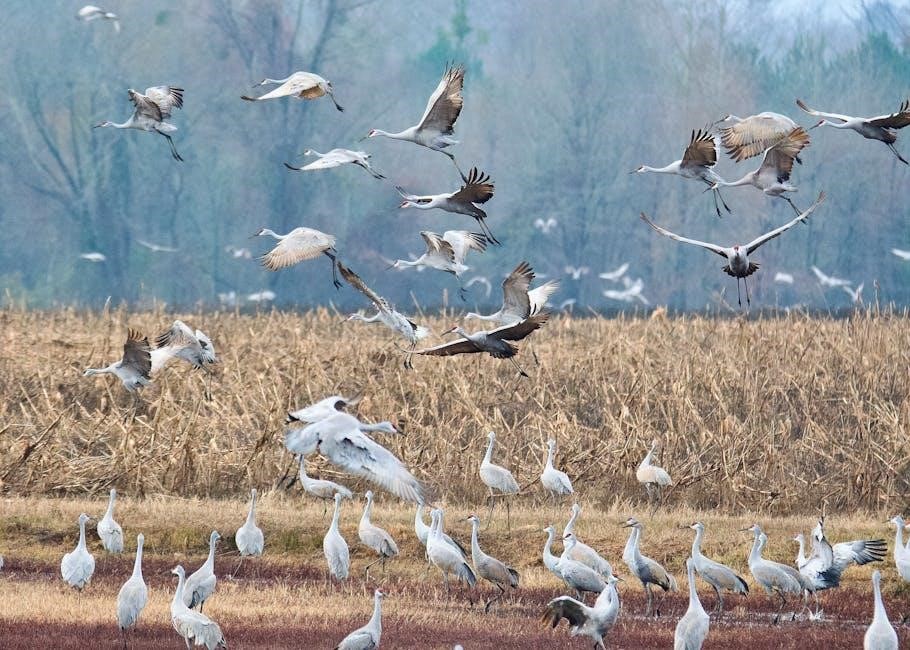
Tips for Bird Watching
Successful bird watching requires patience, knowledge of habitats, and the right gear. Understanding bird behavior and seasonal patterns enhances sightings. Quiet movement and blending into surroundings help avoid startling birds. Early mornings and late afternoons are ideal times for activity. Keeping a journal to record observations is highly recommended for tracking species and improving identification skills over time.
Best Times for Birding
Alabama’s warm climate and location on the Atlantic Flyway make it a prime destination for birdwatching year-round. The best times for birding are during spring and fall migrations, with peak activity in April and September-October. Early mornings and late afternoons offer ideal conditions for spotting birds. Winter months also attract waterfowl and seasonal species, while summer provides opportunities to observe breeding birds in their habitats.
Essential Gear for Birders
To enhance your birding experience in Alabama, equip yourself with a pair of high-quality binoculars for clear views. A field guide specific to Alabama’s birdlife is invaluable for identification. Carry a spotting scope for distant observations and a journal to record sightings. Wear comfortable, muted clothing and sturdy footwear for hiking. Don’t forget sunscreen, a hat, and water for long excursions. A camera and birding app can also aid in documenting and learning.
Birding Ethics
Respect birds and their habitats by maintaining a safe distance to avoid stress. Stay on designated trails to prevent habitat disturbance. Never litter or alter environments for better views. Follow local regulations and permits for birding activities. Keep noise levels low to avoid startling birds. Be courteous to fellow birders and property owners. Prioritize bird welfare over photography or viewing desires; Ethical birding ensures sustainable enjoyment for all.
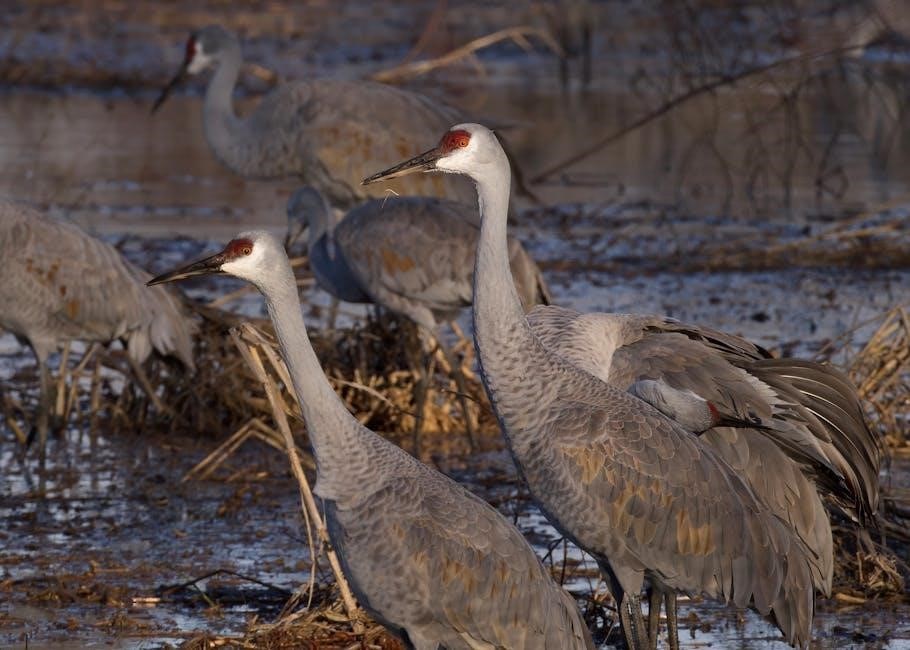
Bird Conservation in Alabama
Protecting habitats and engaging communities are vital for preserving Alabama’s bird species, supported by local organizations and conservation efforts to ensure a thriving avian population.
Local Organizations
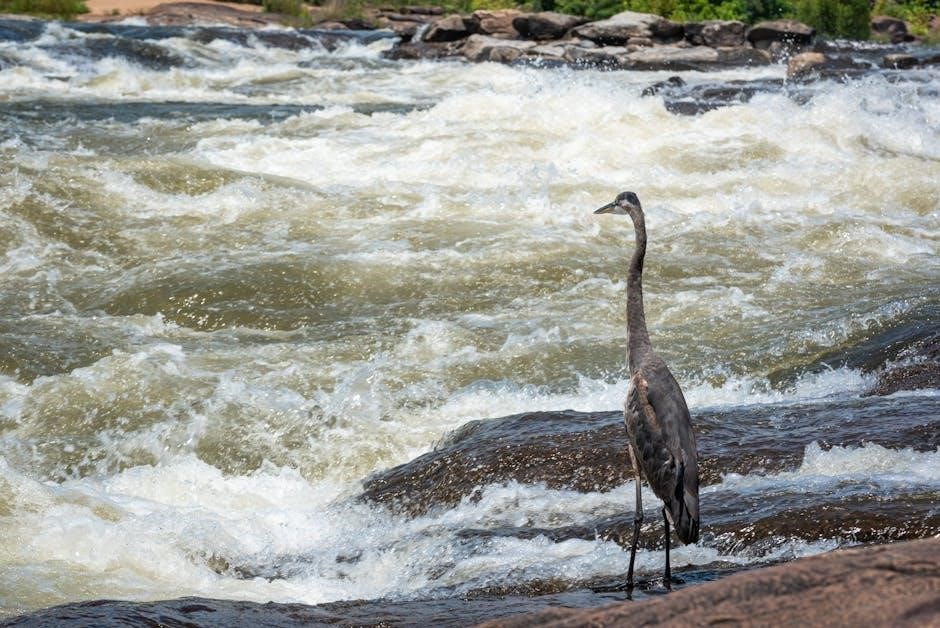
Local organizations like the Alabama Ornithological Society and Audubon Alabama play a crucial role in bird conservation. They organize bird counts, habitat restoration, and educational programs to protect avian species. These groups collaborate with state agencies and communities to promote sustainable practices and raise awareness about the importance of preserving Alabama’s bird populations and their habitats for future generations.
Habitat Preservation
Habitat preservation is vital for Alabama’s bird populations. Wetlands, forests, and grasslands provide essential nesting and feeding grounds. Efforts focus on protecting these areas from development and pollution. Restoration projects, like marsh revitalization and forest management, ensure sustainable ecosystems. Preserving natural habitats supports biodiversity and safeguards migratory routes, benefiting both resident and migratory bird species in Alabama.
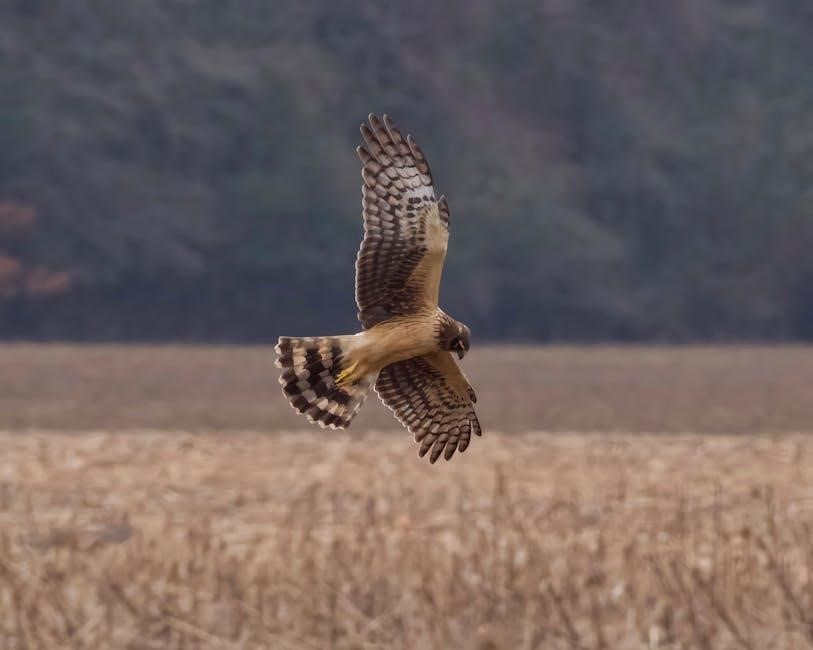
Community Involvement
Community involvement plays a crucial role in bird conservation. Local initiatives, such as bird counts and nesting box installations, engage residents in protecting avian populations. Educational programs in schools and community centers raise awareness about bird-friendly practices. Collaborative efforts between citizens and organizations foster a sense of stewardship, ensuring the preservation of Alabama’s bird diversity for future generations.
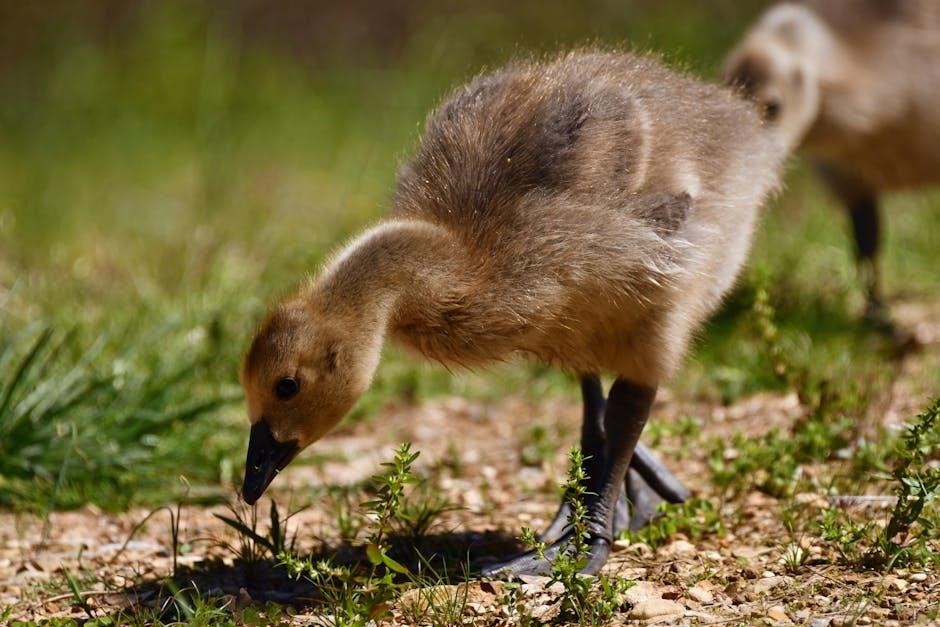
Additional Resources
- Recommended Field Guides: Essential for identifying Alabama’s bird species.
- Online Birding Communities: Connect with experts and enthusiasts for real-time updates.
- Local Birding Tours: Guided excursions to explore Alabama’s avifauna.
Recommended Field Guides
For identifying Alabama’s diverse bird species, field guides are indispensable tools. The Sibley Guide to Birds and National Audubon Society Field Guide to Birds are highly recommended for their detailed illustrations and range maps. Local guides like Birds of Alabama by Bailey and Whitmore offer regional expertise. These resources provide vivid descriptions, habitat insights, and tips for distinguishing similar species, making them essential for both novice and experienced birders. Always choose guides updated with the latest taxonomic changes for accuracy.
Online Birding Communities
Online birding communities are vital for connecting enthusiasts and sharing knowledge. Platforms like eBird and Facebook birding groups provide real-time updates on sightings and species distributions. These forums also offer expert advice, photo sharing, and event announcements. Joining online communities helps birders stay informed, learn from others, and participate in citizen science projects. They are invaluable resources for both seasoned birders and newcomers to the hobby.
Local Birding Tours
Alabama offers guided birding tours led by experienced naturalists, exploring diverse habitats. Popular spots include Gulf Coast beaches, Mobile Bay, and inland forests. These tours provide insight into bird behavior, habitat, and migration patterns. Many tours cater to all skill levels, from beginners to seasoned birders. They often include walking, boat, or driving excursions, ensuring a comprehensive birding experience. Local tours also support conservation efforts and foster community engagement with nature.
